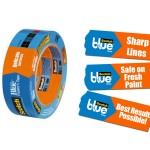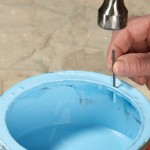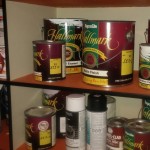 I’m cheap. I’ve probably written that before, but that doesn’t matter. I’m so cheap, it’s legitimate to write it again. But that cheapness has it’s limits.
I’m cheap. I’ve probably written that before, but that doesn’t matter. I’m so cheap, it’s legitimate to write it again. But that cheapness has it’s limits.
Several months ago, I learned a tough lesson in the world of Cheapness. I was working on a project in my kitchen and I needed a small screwdriver to unscrew and remove about 12 tiny screws. After scrounging in my basement work room and coming up empty, I decided I needed to travel to the tool store.
Reluctantly I did. My little wad of crinkled dollar bills was in my pocket and I planned to run in, grab the screwdriver and get back home to finish the project so I could go outside and play and have fun with the kids.
However, something happened: on my way to the tool store, I drove past a dollar store, and my wife announced that we needed to stop there so she could pick up some this or that. So we stopped. And as she made a beeline for the different items she needed, I wandered.
And do you know what happened? I wandered into the tool section. (I hesitate to call it a “department” because we were, after all, in a dollar store). Anyway, we wandered into the tool section and I found, sitting on the shelf in a bright, shiny plastic package, a set of 12 screwdrivers. The price tag? Exactly 1 U.S. Dollar. Plus tax.
Well, if you’re me, that 12-pack-for-just-1-dollar-deal is just too good to refuse. So I snatched it up, dropped it on the counter and promptly paid my $1.06. All the way home, I bragged up my find to my wife. Oh, I knew the tools weren’t the best, but all I needed to do was remove 12 screws. And I had 12 screwdrivers. It’s impossible that I could fail, right?
Riding on cloud nine, I pulled into the driveway and marched into the house ready to tackle my project. And of course, you already know what happened. The first screwdriver broke on the third twist–the shaft separated from the handle. No problem. I had 11 more. And I’d planned on this. No Sweat.
But then the second and third screwdriver broke before I’d removed that first screw. And I started to get nervous. I mean really? Could I possibly break every single screwdriver in a 12 pack before I’d unscrewed 12 screws? Could such a think happen? Surely, no!
Sadly, yes. They all broke. I still had 6 or so screws to go when I threw the last screwdriver into the garbage. Frustrated, I drove to the tool store, dropped $6, came back home, and about 2 hours after I’d started, I finally had everything done.
A project that should have taken 10 minutes max ended up taking a couple of hours (when you add in all the driving and waiting in line and so on).
In the end, it taught me a good lesson: there’s a time and a place for cheapness. But there’s also a time and place for purchasing quality materials. Dropping the extra money right up front is sometimes the best money-and-time-saving decision you can make. It was that way with those screwdrivers and it’s also that way with paint.
See, so often people think paint is paint. Good paint isn’t any different from cheap paint. At least that’s the thinking. And when people who think there’s no real difference in quality see that quality paint is about $8 more per gallon, well, their decision is basically made for them. They buy the cheapest paint they can find and then work their way through the project. In the end, they get the walls covered, but they usually put the brushes and rollers away heaving a sigh of relief that the terrible, horrible job is finally done and they walk away assuming that painting is a pain.
However, it’s not the painting that’s the pain. It’s the paint. When you use a cheap paint product, you may not realize there’s a difference between it and a quality product, but that doesn’t change the fact that there is. High quality materials roll onto your walls easier, with less work. They don’t drip and spatter all over the place. They cover and hide much better. They go farther. They wash up and hold up better and they don’t need to be touched up as often.
A good paint versus a cheap paint can often take at least 1 less coat and will usually still be looking great on your walls when the cheaper paint is begging for a repaint.
And that’s the point to think about: buying the better paint right in the beginning is, by far, the better value. Sure, it may (in an average living room that takes 2 gallons of paint) cost about $16 total dollars more than the cheap paint, but think of the benefits: the paint will apply easier, cover better, hide more, drip less and last longer. You’ll apply fewer coats, spend less time, and won’t need to deal with drips and spills.
$16 more on an average room will save you at least an hour or two of work and will provide you with a better product that will wash up, resist wear and need less touch-ups than a cheaper paint.
With the screwdrivers, I assumed there was no way to make a bad screwdriver. I thought a screwdriver was a screwdriver–why pay $5 for 1 when I could get 12 for $1? I learned the hard way that all screwdrivers aren’t created equal. The same is true with paint. Good paint will make a difference. Sure, it will cost more up front, but the value in the long run will be worth it. Try it. Just once. Pick up a high quality paint (RepcoLite, of course) for your next project and see what a difference it makes!



 Every now and again, a new product enters the home decorating field and changes the way everything is done. Today I want to very briefly highlight one such product: 3M’s Delicate Surface Masking Tape.
Every now and again, a new product enters the home decorating field and changes the way everything is done. Today I want to very briefly highlight one such product: 3M’s Delicate Surface Masking Tape.
 The other day, I received a call from the Manager at our Jenison RepcoLite, John Boomsma (see inset). He had just run into a crazy situation in the store and figured I could make use of the information on our blog.
The other day, I received a call from the Manager at our Jenison RepcoLite, John Boomsma (see inset). He had just run into a crazy situation in the store and figured I could make use of the information on our blog.
 I received a question in my email the other day regarding touching up some paint on a wall. The question was a good one and I thought I’d spell out a few simple tips here that will help make your next touch-up job go a little easier.
I received a question in my email the other day regarding touching up some paint on a wall. The question was a good one and I thought I’d spell out a few simple tips here that will help make your next touch-up job go a little easier.
 Have you ever noticed that when you’re sick, everybody is suddenly a doctor. Everyone has an opinion and a cure for what ails you. And while some of the cures are very common–chicken soup cures, we could call them–others are anything but.
Have you ever noticed that when you’re sick, everybody is suddenly a doctor. Everyone has an opinion and a cure for what ails you. And while some of the cures are very common–chicken soup cures, we could call them–others are anything but. a paint storage tip. It’s actually a painting application tip, but I’m including it here because it can radically affect your ability to store paint when you finish the job.
a paint storage tip. It’s actually a painting application tip, but I’m including it here because it can radically affect your ability to store paint when you finish the job. The second method I’d like to address is the common Store the Paint Can Upside Down method. The theory behind this concept is that air will leak in through the lid. If you turn the can upside down, the air will not be able to sneak in and therefore, your paint will stay good longer.
The second method I’d like to address is the common Store the Paint Can Upside Down method. The theory behind this concept is that air will leak in through the lid. If you turn the can upside down, the air will not be able to sneak in and therefore, your paint will stay good longer. then Pound the Lid on method. This is supposed to create an extra seal between the rim and the lid and prevent air from seaping into the can.
then Pound the Lid on method. This is supposed to create an extra seal between the rim and the lid and prevent air from seaping into the can.
 The search for the perfect method to properly store paint is one of those Holy Grail-type quests in the painting world. Everybody everywhere has an idea (or two) as to the best ways to ensure that your paint doesn’t dry out in the can as it sits on your shelf.
The search for the perfect method to properly store paint is one of those Holy Grail-type quests in the painting world. Everybody everywhere has an idea (or two) as to the best ways to ensure that your paint doesn’t dry out in the can as it sits on your shelf.